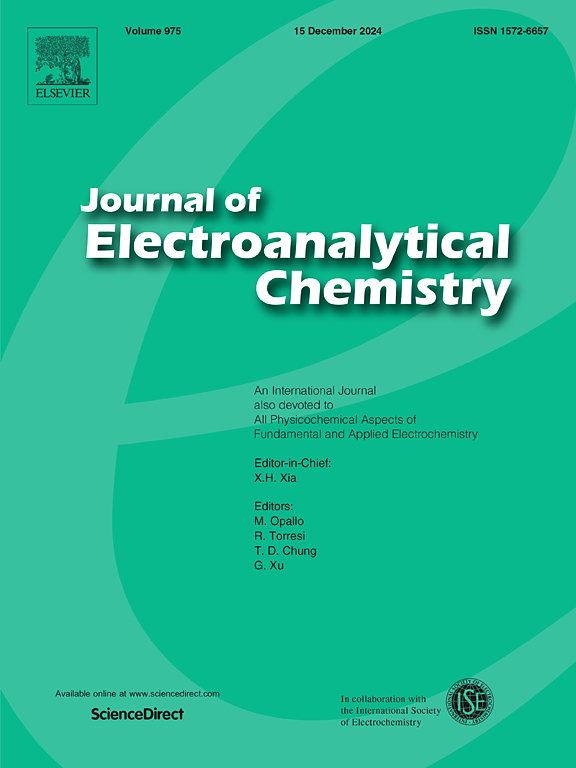3.5 kD切断透析膜制备的低分子有机酸(LOA)对管道钢性能的影响
IF 4.1
3区 化学
Q1 CHEMISTRY, ANALYTICAL
引用次数: 0
摘要
本研究源于对不同分子量的SRB代谢物对管道钢的腐蚀的调查,特别关注低分子有机酸(LOA)的作用。利用离心和透析膜分离出分子量小于3.5 kD的代谢物。结果表明,LOA对阳极溶解有显著影响,分别占腐蚀过程的78.9%、62.1%和88.7%。开路电位(OCP)测量显示,LOA将电位移至更负的值,表明对腐蚀的敏感性增加。相反,大分子代谢物,如细胞外聚合物(EPS),主要引起点蚀。同时暴露于LOA和大分子代谢物的薄片腐蚀速率达到0.103 mm·y−1,显示出加速电化学腐蚀的协同效应。本研究更深入地分析了SRB代谢物的腐蚀机理,对MIC保护提高管线钢的使用率起到了积极的作用。本文章由计算机程序翻译,如有差异,请以英文原文为准。
The effect of low-molecular organic acids (LOA) obtained by 3.5 kD cutoff dialysis membrane the behavior of pipeline steel
The present study originated from an investigation into the corrosion of pipeline steel by SRB metabolites of varying molecular weights, with a particular focus on the role of low-molecular organic acids (LOA). Metabolites with molecular weights below 3.5 kD were isolated using centrifugation and dialysis membranes. Results indicate that LOA contribute significantly to anodic dissolution, accounting for 78.9 %, 62.1 %, and 88.7 % of the overall corrosion process. Open circuit potential (OCP) measurements revealed that LOA shifted the potential to more negative values, suggesting increased susceptibility to corrosion. In contrast, macromolecular metabolites, such as extracellular polymeric substances (EPS), primarily induced pitting corrosion. The corrosion rate for coupons exposed to both LOA and macromolecular metabolites reached 0.103 mm·y−1, demonstrating a synergistic effect that accelerates electrochemical corrosion. The study analyzed the corrosion mechanism of SRB metabolites more deeply, and has contributed positively to the MIC protection to increase the usage rate of pipeline steel.
求助全文
通过发布文献求助,成功后即可免费获取论文全文。
去求助
来源期刊
CiteScore
7.80
自引率
6.70%
发文量
912
审稿时长
2.4 months
期刊介绍:
The Journal of Electroanalytical Chemistry is the foremost international journal devoted to the interdisciplinary subject of electrochemistry in all its aspects, theoretical as well as applied.
Electrochemistry is a wide ranging area that is in a state of continuous evolution. Rather than compiling a long list of topics covered by the Journal, the editors would like to draw particular attention to the key issues of novelty, topicality and quality. Papers should present new and interesting electrochemical science in a way that is accessible to the reader. The presentation and discussion should be at a level that is consistent with the international status of the Journal. Reports describing the application of well-established techniques to problems that are essentially technical will not be accepted. Similarly, papers that report observations but fail to provide adequate interpretation will be rejected by the Editors. Papers dealing with technical electrochemistry should be submitted to other specialist journals unless the authors can show that their work provides substantially new insights into electrochemical processes.

 求助内容:
求助内容: 应助结果提醒方式:
应助结果提醒方式:


